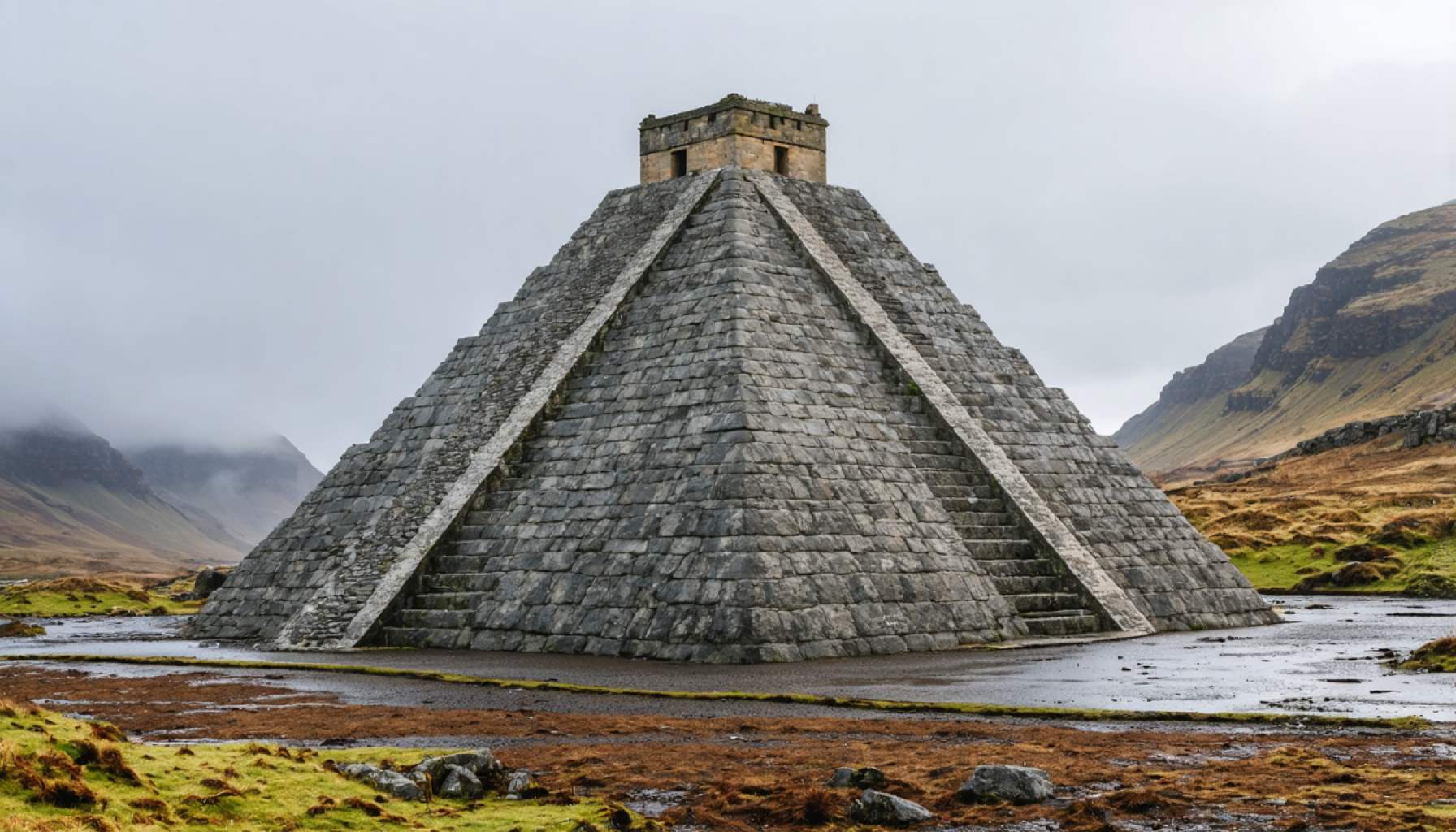- The Cairngorms National Park in Scotland houses a 41-foot granite pyramid on the Balmoral Estate, a notable but lesser-known landmark.
- This pyramid was commissioned by Queen Victoria as a memorial for her husband, Prince Albert, after his death in 1861.
- Part of the estate’s eleven cairns, it represents significant royal history, contrasting traditional historical monuments like those in Egypt.
- Adventurer Tom Prout’s encounter with the pyramid highlights the unexpected historical richness within familiar landscapes.
- The discovery emphasizes that remarkable sites aren’t exclusive to distant locations; local wonders await the curious and adventurous.
- Prout’s find encourages exploration and appreciation of heritage sites close to home, inviting a broader understanding of local history.
Amidst the rugged landscape of Scotland’s Cairngorms National Park, where dense forests and craggy peaks dominate the horizon, lies a secret not many would expect: a pyramid soaring 41 feet into the sky. Unlike its Egyptian counterparts, this granite monument tells a tale steeped not in ancient history, but in royal remembrance.
Adventurer Tom Prout found himself in awe as he stumbled upon this incongruous landmark during an impromptu hike. Towering and timeless, the pyramid resides on the prestigious Balmoral Estate in Aberdeenshire, a land rich with royal lore. Crafted at the behest of Queen Victoria, it serves as a solemn tribute to her beloved consort, Prince Albert, who passed away in 1861. This stone edifice is not alone; it is one of eleven cairns around the estate, each a testament to pivotal moments in royal life.
This unexpected discovery by Prout underscores an often-overlooked aspect of British heritage, one that contrasts vividly with the ancient sands of Giza. His exclamation that the site’s grandeur rivals its Egyptian cousins, albeit on a different scale, invites a reimagining of what it means to encounter a pyramid — not just in terms of travel, but in appreciating the layers of history present in one’s own backyard.
The experience offers a crucial takeaway: wonders do not solely reside in distant lands. Sometimes, hidden gems rest quietly beneath our very noses, waiting only to be discovered by the curious and the intrepid. As Tom Prout’s journey through the forest showed, adventure often begins with the bold decision to explore the paths less traveled.
Unveiling Scotland’s Hidden Pyramid: The Royal Cairns of Balmoral Estate
Discovering Cultural Treasures in Unexpected Places
In the serene yet majestic natural enclave of Scotland’s Cairngorms National Park, one might expect to find breathtaking views and diverse wildlife. However, the park also shelters an extraordinary historical treasure: a granite pyramid standing a striking 41 feet high. This monument, unlike its famous Egyptian cousins, is marked by a different kind of history—a story of royal remembrance and deep personal loss.
The Story Behind the Pyramid
Commissioned by Queen Victoria in memory of her beloved husband, Prince Albert, after his passing in 1861, this pyramid is one among eleven cairns on the Balmoral Estate. Each cairn commemorates significant events in the life of Britain’s royal family, offering an intriguing blend of nature and human history.
Why Visit the Balmoral Estate?
– Cultural Heritage: Visitors not only explore the physical beauty of the Cairngorms but also touch upon the storied past of the British monarchy.
– Scenic Beauty: The estate itself is surrounded by lush forests and craggy peaks, offering endless opportunities for hiking, photography, and solitude.
– Adventurer’s Delight: As evidenced by adventurer Tom Prout’s experience, stumbling upon these historical remnants adds an unexpected thrill to a hike.
Real-World Use Cases
– Education: History students and enthusiasts can gain insights into 19th-century British history and royal traditions.
– Tourism: Tour operators can include this site in travel itineraries, especially those focusing on Scottish heritage and landscapes.
Market Forecast & Industry Trends
The tourism industry continues to evolve with a growing trend towards “heritage tourism.” Visitors are increasingly seeking experiences that connect them to history and culture, indicating a positive trajectory for sites like the Balmoral Estate.
Features & Pricing
– Access: Admission to Balmoral is available during specific times of the year, typically from April to July, with guided tours offered.
– Fees: Entrance fees are nominal and often contribute to the estate’s upkeep and preservation efforts.
Insights & Predictions
– Sustainability: As awareness of ecological preservation grows, there is potential for the development of sustainable tourism practices at Balmoral. This might include low-impact tours and educational programs on conservation.
How to Plan Your Visit
1. Research Opening Times: Check the official Balmoral Estate website for the latest visitor information and opening hours.
2. Guided vs. Self-Tours: Decide whether you prefer a guided experience, which offers richer historical context, or a self-guided tour for flexibility.
3. Explore the Surrounding: Take time to also indulge in the natural splendor of the Cairngorms National Park, which offers diverse attractions for outdoor enthusiasts.
Conclusion: Embrace the Adventure
The chance discovery made by Tom Prout serves as a reminder that adventure can be just around the corner, concealed by the forests of a beloved national park. As more travelers and locals decide to explore lesser-known trails, they uncover the wonders of history that reside so close.
For more information, visitors can explore Balmoral Castle.
By embracing the spirit of exploration, we recollect that heritage and natural beauty often coexist, offering endless inspiration and awe.
